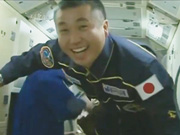Topics 2013
December 2013
Dec. 26, 2013 Updated
Launch date set for GPM/DPR on H-IIA F23! Special site now available!
|
The launch date and time for the H-IIA Launch Vehicle No. 23 (H-IIA F23) withThe core observatory for the Global Precipitation Measurement mission onboard was decided to be at around 3:07 a.m. thru 5:07 a.m. (JST) on February 28 (Fri.,) 2014.
We opened a special site for the GPM/DPR, please have a look! |
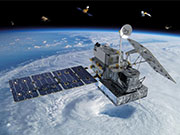
|
|---|
November 2013
Nov. 29, 2013 Updated
Astronaut Onishi selected as ISS expedition crew member
|
Astronaut Takuya Onishi has been selected as a crewmember for the 48th/49th Expedition Mission to the International Space Station (ISS). He will stay there for about six months from around June, 2016. Astronaut Onishi was selected as an astronaut candidate in February 2009, and then, certified as an ISS astronaut in July 2011. Since then, he has been continuously maintaining and improving his qualities as an ISS astronaut through various training. This long duration stay aboard the ISS will be his first space flight. During his stay there, he will be in charge of ISS operation and scientific experiments using the space environment as a flight engineer. |
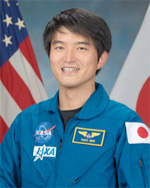 |
|---|
Nov. 27, 2013 Updated
World's first 4K moving image of Comet ISON shot by Astronaut Wakata
|
Astronaut Wakata, who is now staying on the International Space Station (ISS), successfully took a 4K moving image from space for the first time in the world. The camera was a super-sensitive 4K camera system for space use jointly developed by JAXA and NHK. Astronaut Wakata shot Comet ISON and its tail and parts of the aurora from 420 km above the Earth in space over Ontario, Canada, at 7:08 p.m. on Nov. 23 (Sat. Japan Standard Time.) The image taken this time will be broadcast on NHK. Comment from Astronaut Koichi WakataUnlike looking up from the Earth, stars are in 3D when you look out into space from the ISS, and that makes me truly realize space is enormously vast. I love to send such breathtaking views of space to you. Super-sensitive 4K camera systemThis is a high-resolution camera whose resolution is four times that of current high-definition models with some special modifications including adopting super-high resolution eight times that of conventional ones, and adding a special feature for comet shooting. |
 |
|---|
Nov. 25, 2013 Updated
GPM core observatory jointly developed by JAXA and NASA arrived in Japan!
|
The core observatory for the Global Precipitation Measurement (GPM) mission arrived at Kitakyushu Airport in Japan from the NASA Goddard Space Flight Center in the U.S.A. about 12:28 p.m. on Nov. 24 (Sun.) The GPM core observatory was jointly developed by JAXA and NASA. After arrival at the airport, the satellite was then transported to the Tanegashima Space Center by cargo ship for launch by the H-IIA Launch Vehicle. Its arrival here was originally scheduled for the 22nd, but it was delayed for two days due to bad weather in Alaska, where the cargo plane stopped for refueling. The GPM mission is a joint international project to observe global precipitation conditions quite frequently and accurately by combining the core observatory and a consternation of some eight satellites. The GPM mission will begin on a full scale when the core observatory, which came to Japan today, is launched, and it will become useful in many ways for our daily life including global-scale water resource control, damage mitigation for water-related disasters such as typhoons and floods, and weather forecasting accuracy improvement. The Dual-frequency Precipitation Radar (DPR) aboard the GPM core observatory developed by JAXA is one of the cutting-edge observation devices developed in Japan. It enables three-dimensional observations of rain with high sensitivity. |
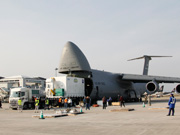 |
|---|
Nov. 21, 2013 Updated
The International Space Station turns 15 on November 20! Celebrate with a Virtual World-Wide Wave!
|
Since the launch of Zarya, the first module of the International Space Station (ISS), on November 20, 1998, five space agencies have worked together to build the orbiting science lab-one of the most complex scientific and technological endeavours ever undertaken. |
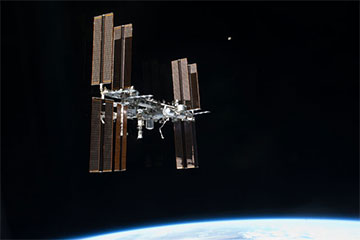 Caption: The International Space Station (Photo: NASA) |
|---|
JAXA Twitter timeline from November 20 to 21
11/20 9:00
Congrats, ISS 15th anniversary! It's high time to be evaluated if it could provide benefits for our lives. Find messages from JAXA! #ISS15
11/20 10:00
Japanese FIRST ISS stay, FIRST ISS commander. "FIRST" is a word to modify WAKATA. There's no question about his new achievements. #ISS15
|
11/20 11:00 |
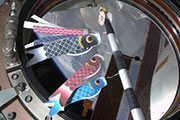 |
|---|
11/20 12:00
Yokoyama
KIBO Lab offers a wide variety of usages with combinations of inside, outside, airlock and robot arm. Let's invent yours! #ISS15
11/20 13:00
At TKSC, JFCT has been engaged in "24 hours, every day" operation of ISS. Joined by teams in the world, we'll keep, operate great JEM! #ISS15
11/20 14:00
Astronaut, Soichi Noguchi
15 yrs ago today, @Baikonur. I still have fond memories of watching the launch of FGB and its celebration. #ISS15
|
11/20 15:00 |
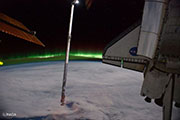 |
|---|
|
11/20 16:00 |
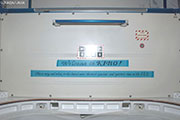 |
|---|
11/20 17:00
ISS-Int'l project by 5- agency. Modules never been assembled on ground, but in space. Close coordination,analyses led its completion #ISS15
11/20 18:00
HTV4, launched on Aug.4, unberthed from ISS on Sep.4. 4 days later from reentry, 4th anniversary from HTV1. How rimmed with No."4"! #ISS15
|
11/20 19:00 |
 |
|---|
11/20 20:00
Protein, principal of life activity, brought medical benefits for dystrophia, flu, etc.,. Dev. of therapeutic agents been underway. #ISS15
11/20 21:00
KIBO, Japanese first manned exp. module was our first trial to make a Lab in space. We're proud of this sophisticated MADE in JAPAN! #ISS15
11/20 22:00
"Water", the most important material. Its frozen behavior, Marangoni convection, etc.,. Space exp. revealed mysteries in 20 years. #ISS15
|
11/20 23:00 |
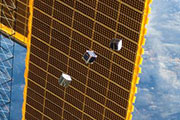 |
|---|
11/21 00:00
Astronaut, Kimiya Yui
ISS,dream that shows the unlimited potential of mankind & world peace. I'm honored to be assigned to Exp 44/45 #ISS15
11/21 01:00
Astronaut, Kimiya Yui
МКС-это символ мечты, неограниченного потенциала человечества и мира во всем мире. Это честь-быть назначенным в экипаж МКС-44/45 #ISS15
|
11/21 02:00 |
 |
|---|
11/21 03:00
Astronaut, Norishige Kanai
I had an opportunity to watch Koichi's launch. People from various background work together. ISS, what an Int'l project! #ISS15
11/21 04:00
KIBO, the biggest module. By accommodating many exp. equipments both in/outside, various exp. conducted. Easy to deploy satellites. #ISS15
11/21 05:00
AAs a result of life science exp. in KIBO, it's been revealed plant stems grow faster in space. Various exp. utilizing 0-G underway! #ISS15
11/21 06:00
JAXA has studied varioius space medical researches to reduce medical risks, improve performance by astronauts during space mission. #ISS15
11/21 07:00
Results of experiments conducted on Kibo's Exposed Facility by "MAXI", "SEDA-AP", "SMILES" and "MCE" have been generated in waves. #ISS15
11/21 08:00
This moment'll be the begging of ISS's fruitful discovery by maximizing use of JEM as test bed for future Int'l Exploration mission. #ISS15
Nov. 18, 2013 Updated
Since the launch of Zarya, the first module of the International Space Station (ISS), on November 20, 1998, five space agencies have worked together to build the orbiting science lab-one of the most complex scientific and technological endeavours ever undertaken.
On November 20, 2013, celebrate with us as we launch a world-wide wave on Twitter to cheer the ISS!
Starting at midnight GMT-the official time zone of the ISS-the European Space Agency (ESA), the Japan Aerospace Exploration Agency (JAXA), the National Aeronautics and Space Administration (NASA), and the Canadian Space Agency (CSA) are launching a world-wide wave for ISS on Twitter! We will issue 24 ISS-related tweets in 24 hours, one tweet every 60 minutes at the top of the hour.
Join the wave by following the hashtag #ISS15! Keep the wave rolling by telling us what the International Space Station-its science, technology and astronauts-means to you. Head outside and see the space station for yourself. If you're lucky enough to photograph it, share your photo by tagging it with #ISS15.
It's your space station, and it's your turn to get involved! How will you do the world-wide wave?
Join the #ISS15 wave! Follow these Twitter handles:
ESA
ESA national accounts
Nov. 7, 2013 Updated
Astronaut Wakata begins his ISS expedition mission!
|
Nov. 7, 2013 Updated
Astronaut Wakata lifts off for space!
Soyuz launched from Baikonur Cosmodrome
|
The Soyuz Spacecraft (37S/TMA-11M) with Astronaut Koichi Wakata onboard lifted off at 1:14 p.m. on Nov. 7 (Thu., Japan Standard Time) from Baikonur Cosmodrome (Republic of Kazakhstan.) The Soyuz will be docked with the International Space Station (ISS) at 7:31 p.m.(JST.) The Soyuz crew members including Astronaut Wakata will then enter the ISS for their long-stay mission there. We will begin our live broadcast through the Internet of their entrance to the ISS from 9:00 p.m. (JST.) Please don’t miss it! |
 |
|---|
Nov. 6, 2013 Updated
Live broadcast of Astronaut Wakata's departure on Nov. 7 (Thu.,JST)
|
The Soyuz spacecraft carrying Astronaut Wakata and other crew members is scheduled for launch at 1:14 p.m. on Nov. 7 (Japan Standard Time.) JAXA will broadcast their departure live via the Internet. You can also watch the broadcast at some public viewing places including JAXA field offices and science museums all over Japan.
The above schedule is subject to change or suspension due to weather conditions, mission progress, or other factors.
|
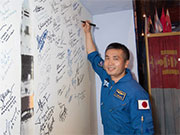 |
|---|
October 2013
Oct. 17, 2013 Updated
SHIZUKU receives Nikkei Global Environmental Technology Awards Prize for Excellence!
|
The Global Change Observation Mission 1st - Water "SHIZUKU" (GCOM-W1) captured the 2013 Nikkei Global Environmental Technology Awards Prize for Excellence. The awards are sponsored by Nikkei Inc. to be given to individuals and groups who have made outstanding contributions to environmental preservation. |
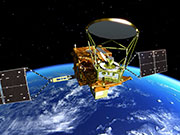 |
|---|
Oct. 9, 2013 Updated
New corporate slogan: Explore to Realize
|
As we mark our 10th anniversary, we have freshly started as the only public research organization to support Japan’s space development and utilization with technology. Accordingly, we announced a new action policy for newly-born JAXA.
|
 |
|---|
September 2013
Sep. 14, 2013 Updated
Launch Result of Epsilon-1 with SPRINT-A aboard
|
JAXA launched the first Epsilon Launch Vehicle (Epsilon-1) with the Spectroscopic Planet Observatory for Recognition of Interaction of Atmosphere (SPRINT-A) onboard at 14:00 on September 14 (Sat.), 2013 (Japan Standard Time, JST) from the Uchinouora Space Center. |
 |
|---|
Sep. 12, 2013 Updated
Epsilon-1/SPRINT-A new launch date decided!
|
JAXA would like to announce that we have set the launch date and time of the first Epsilon Launch Vehicle (Epsilon-1) with the Spectroscopic Planet Observatory for Recognition of Interaction of Atmosphere (SPRINT-A) onboard as follows.
JAXA will broadcast a live launch report from the Uchinoura Space Center from 1:25 p.m. on the day. You can watch it through the Internet. |
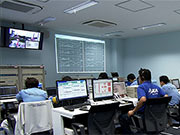 |
|---|
Sep. 9, 2013 Updated
New Launch Day Information for Epsilon-1 with SPRINT-A Onboard
|
The Japan Aerospace Exploration Agency (JAXA) decided to postpone the launch of the first Epsilon Launch Vehicle (Epsilon-1) with the Spectroscopic Planet Observatory for Recognition of Interaction of Atmosphere (SPRINT-A) onboard on August 27 from the Uchinoura Space Center. As a result of our cause investigation of the postponement and re-examination of the Epsilon-1, the new launch date will be September 14, 2013 (Japan Standard Time) or later. |
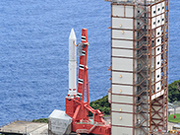 |
|---|
August 2013
Aug. 28, 2013 Updated
Updated Information about Epsilon-1 Launch Day
|
The Japan Aerospace Exploration Agency is now investigating the cause of an automatic stop alarm issued approximately 19 seconds prior to liftoff during the Epsilon-1 launch countdown operation on August 27, 2013. As we have decided to carefully examine the cause and prudently confirm the measures, it is very difficult for us to set the new launch date within August. |
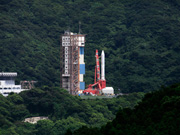 |
|---|
Aug. 27, 2013 Updated
Launch Cancellation of Epsilon-1 with SPRINT-A Onboard
|
The Japan Aerospace Exploration Agency (JAXA) cancelled today’s launch of the first Epsilon Launch Vehicle (Epsilon-1) with the Spectroscopic Planet Observatory for Recognition of Interaction of Atmosphere (SPRINT-A) onboard from the Uchinoura Space Center, because an automatic stop alarm was issued as an attitude abnormality was detected approximately 19 seconds prior to the liftoff time during the automatic countdown sequence. The launch had been originally scheduled for 1:45:00 p.m. today (Japan Standard Time). |
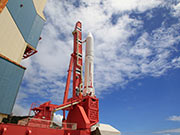 |
|---|
Aug. 25, 2013 Updated
Epsilon-1/SPRINT-A launch time decided! Live broadcast from 1:25 p.m. on August 27 (Tue.)
|
The launch time of the Epsilon Launch Vehicle with the SPRINT-A (Spectroscopic Planet Observatory for Recognition of Interaction of Atmosphere) was set for 1:45:00 on August 27 (Tue.), 2013 (Japan Standard Time). |
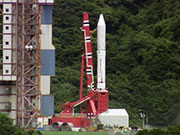 |
|---|
Aug. 20, 2013 Updated
A week to go before Epsilon liftoff!
|
The scheduled launch date of the Epsilon Launch Vehicle with the SPRINT-A onboard is only a week away. The project teams are working hard to be ready for the launch. JAXA will broadcast a live report on the launch day. For more details about the launch including information about public viewing sites, please check the special site! |
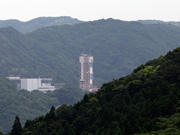 |
|---|
Aug. 10, 2013 Updated
KOUNOTORI4 berthed at ISS!
|
The KOUNOTORI4 (HTV4, a cargo transporter to the International Space Station) was captured by the ISS robotic arm at 8:22 p.m. on August 9 (Japan Standard Time) and berthed at the ISS at 3:38 a.m. on August 10 (JST). The KOUNOTORI4 was launched by the H-IIB Launch Vehicle No.4 on August 4. ISS astronauts will take cargo out from the Pressurized and Unpressurized Logistic Carriers into the ISS. |
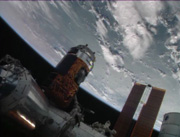 |
|---|
Aug. 8, 2013 Updated
Launch Postponement and Launch Time Change for Epsilon Launch Vehicle with SPRINT-A onboard
|
The Japan Aerospace Exploration Agency (JAXA) decided to postpone the launch of the first Epsilon Launch Vehicle (Epsilon-1) with the Spectroscopic Planet Observatory for Recognition of Interaction of Atmosphere (SPRINT-A) onboard to August 27, 2013,?from the Uchinoura Space Center as JAXA has taken extra time to rectify the incompatibility* found in the ground support equipment during the communication function test between the Epsilon-1 and the equipment in the course of launch campaign at the launch site. The launch was originally scheduled for August 22, 2013 from the center.
|
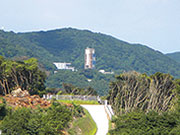 |
|---|
Aug. 4, 2013 Updated
Launch Success of KOUNOTORI4/H-IIB F4
|
The H-IIB Launch Vehicle No. 4 with the KOUNOTORI4 (HTV4, a cargo transporter to the International Space Station) onboard lifted off from the Tanegashima Space Center at 4:48:46 on August 4 (Sun., Japan Standard Time.) |
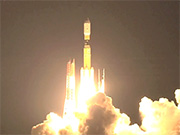 |
|---|---|
Aug. 2, 2013 Updated
KOUNOTORI4/H-IIB F4 launch time decided! Live broadcast from 4:00 a.m. on August 4 (Sun.)
|
The launch time of the H-IIB Launch Vehicle No. 4 with the KOUNOTORI4 (HTV4, a cargo transporter to the International Space Station) was set for 4:48:46 on August 4 (Sun.), 2013 (Japan Standard Time.) |
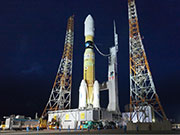 |
|---|
July 2013
Jul. 17, 2013 Updated
Hayabusa2 Message Campaign period extended!
|
JAXA has been conducting a campaign for a challenging space probe mission together with all of you by attaching your names and thoughtful messages on the Hayabusa2. Because we feel that we would like to be united with more people to be ready for the challenging mission, we found a way to extend the campaign period due to the progress of Hayabusa2 manufacturing. We are waiting for more of your names and messages. |
 |
|---|
June 2013
Jun. 17, 2013 Updated
Epsilon Support Message Campaign result!
|
The Message Campaign for the first Epsilon launch vehicle scheduled to be launched on Aug. 22 was held in April and May, and the result of the campaign is now available on our website. |
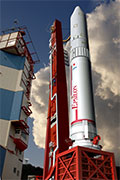 |
|---|
May 2013
May 21, 2013 Updated
Launch of Spectroscopic Planet Observatory for Recognitionof Interaction of Atmosphere (SPRINT-A) by Epsilon-1
|
The launch schedule of the H-IIB Launch Vehicle No. 4 (H-IIB F4) and the first Epsilon Launch Vehicle (Epsilin-1) is decided! The H-IIB F4, which will carry the KOUNOTORI4, is to be launched on Aug. 4MM DD from the Tanegashima Space Center, whereas the Epsilin-1 will lift off from the Uchinoura Space Center with SPRINT-A onboard on Aug. 22MM DD. Please keep your eyes on the two missions in the summer 2013! |
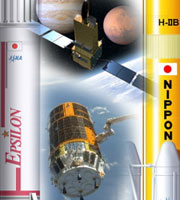 |
|---|
May 15, 2013 Updated
Let's meet with Le Petit Prince! Million Campaign 2 - Your names and messages are welcome!
|
JAXA is holding a campaign to record your names, messages and illustrations onboard the asteroid probe Hayabusa2. |
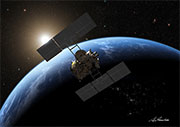 |
|---|
April 2013
Apr. 26, 2013 Updated
Japan-Italy cooperative event ?Japan and Italy: Space Cooperation Forefront?
|
In recent years, Japan and Italy have been cooperating more and more in the space field, including disaster monitoring using satellites and research and development of the Calorimetric Electron Telescope (CALET). We are holding an event to introduce our space cooperation. At a talk event, we will invite astronauts from the two countries to discuss view points and the future of space and manned space activities. Participation is free. Please join us.
Participants should be high-school students or older. |
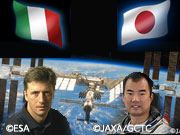 |
|---|
Apr. 10, 2013 Updated
Message Campaign for Hayabusa2 and Epsilon Launch Vehicle
|
JAXA has started message campaigns for two projects, the Hayabusa2, which is scheduled to be launched in 2014, and the Epsilon Launch Vehicle, which will be launched in the summer launch season! |
Apr. 1, 2013 Updated
JAXA begins new five-year period!
|
The Basic Plan for Space Policy was established in January, and the mid-term targets and plan for JAXA’s activity policy for the next five years were published on April 1. Our new President Naoki Okumura held a press conference on the same day. At the conference, President Okumura expressed his enthusiasm after assuming the new post saying, “We would like to boldly challenge tasks that bear new values while attaining results that can be regarded highly internationally in various research and development fields. In addition, we would like to propose new projects besides achieving the mid-term targets.” |
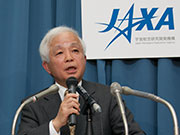 |
|---|
March 2013
Mar. 29, 2013 Updated
Hayabusa2 can carry your names and messages to space
|
JAXA is holding a campaign to record your names, messages and illustrations onboard the asteroid probe Hayabusa2. |
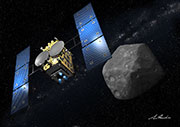 |
|---|
Mar. 28, 2013 Updated
Beyond the Sky and into Space JAXA 2012-2013
|
JAXA has published a film titled “Beyond the Sky and into Space 2012-2013” showing our activities in JFY 2012. |
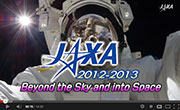 |
|---|
February 2013
Feb. 18, 2013 Updated
Data obtained by Saturn explorer brings mysteries of galactic cosmic ray closer
|
The Cassini spacecraft, which is a Saturn exploration project conducted jointly by NASA, ESA, and the Italian Space Agency, successfully observed in detail strong shock waves generated by a collision of solar winds with Saturn’s magnetosphere. Through data analysis, new information was obtained about how high energy particles were generated in our Galaxy. This research achievement was led by JAXA researchers, and the thesis has been published in “Nature Physics,” an online version of the British science magazine, issued on Feb. 17, 2013. |
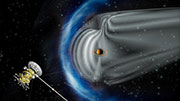 |
|---|
Feb. 13, 2013 Updated
Space station cargo transporter "KOUNOTORI" symposium
|
Japan’s cargo transporter to the International Space Station, “KOUNOTORI (HTV)”, has been highly evaluated and renowned for its technology and high quality components that have been acquired through the development process, following its three consecutive launches. Its technology and components are now exported overseas. We are holding a symposium to introduce and discuss our technological achievements, international appraisals, and future prospects of manned space development by inviting domestic and international specialists. Please join us!
|
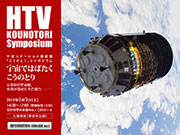 |
|---|
January 2013
Jan. 11, 2013 Updated
Large Magellanic Clouds near-infrared spectroscopic catalog
|
JAXA released the"Large Magellanic Clouds (LMC) near-infrared spectroscopic catalogue" to the world that was compiled by observation data acquired by the infrared imaging satellite “AKARI.” The positional light source catalog released this time is one of the largest-scale LMC catalogs, and the first data as a “spectroscopic” catalog in the world. The catalog, which categorizes celestial bodies in the LMC, is significant data for greatly advancing research on newly born stars as well as already developed ones. |
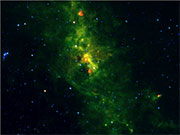 |
|---|
Jan. 9, 2013 Updated
Second International AO for Hayabusa sample investigation
|
The international AO this time aims at contributing to the further development of global asteroid science by offering samples to international researchers. Please confirm the application conditions. We are waiting for your proposals.
|
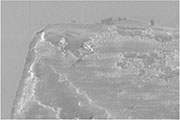 |
|---|
